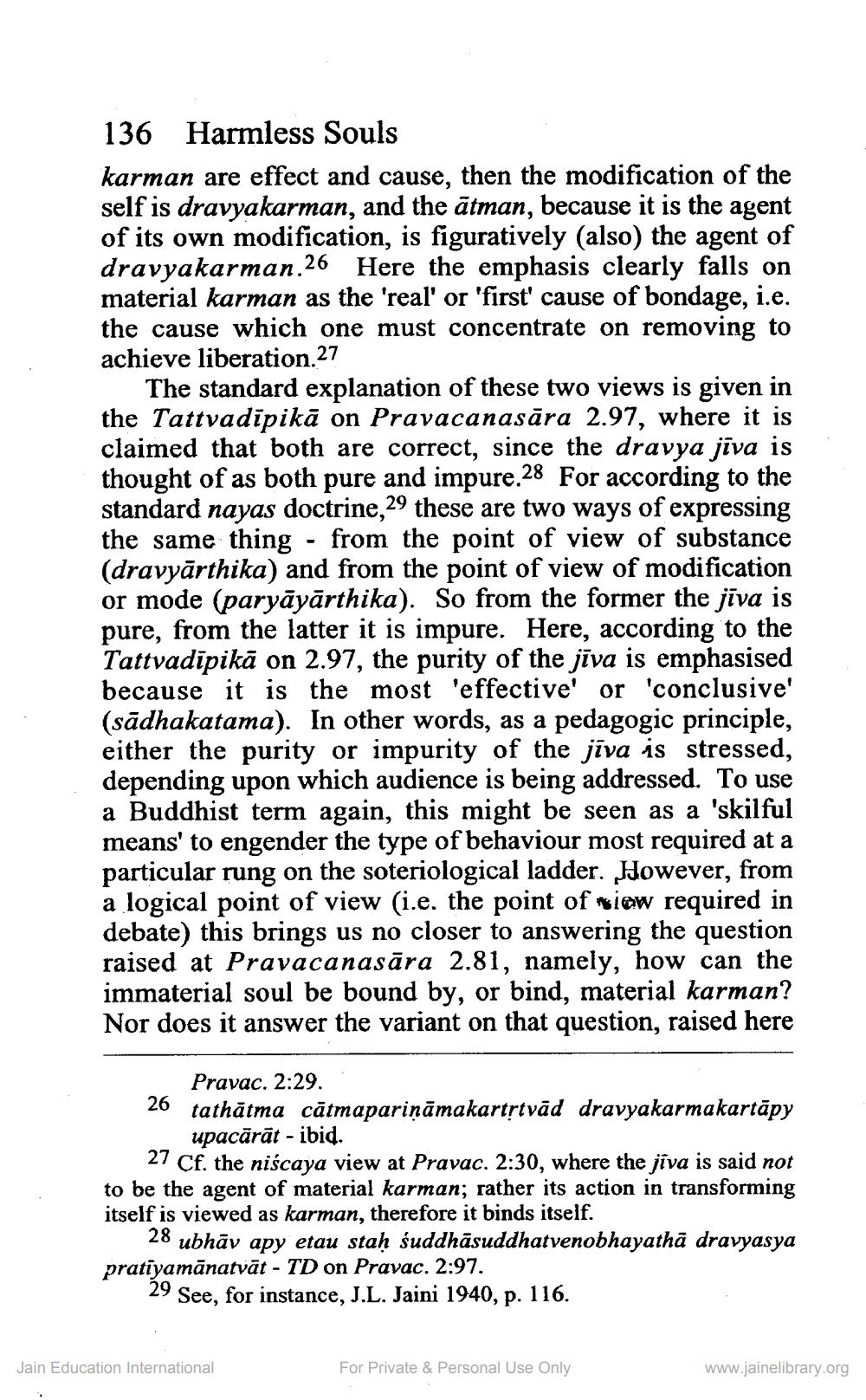________________
136 Harmless Souls karman are effect and cause, then the modification of the self is dravyakarman, and the ātman, because it is the agent of its own modification, is figuratively (also) the agent of dravyakarman.26 Here the emphasis clearly falls on material karman as the 'real' or 'first' cause of bondage, i.e. the cause which one must concentrate on removing to achieve liberation.27
The standard explanation of these two views is given in the Tattvadīpikā on Pravacanasāra 2.97, where it is claimed that both are correct, since the dravya jīva is thought of as both pure and impure.28 For according to the standard nayas doctrine,29 these are two ways of expressing the same thing - from the point of view of substance (dravyārthika) and from the point of view of modification or mode (paryāyārthika). So from the former the jiva is pure, from the latter it is impure. Here, according to the Tattvadīpikā on 2.97, the purity of the jīva is emphasised because it is the most effective' or 'conclusive' (sādhakatama). In other words, as a pedagogic principle, either the purity or impurity of the jīva is stressed, depending upon which audience is being addressed. To use a Buddhist term again, this might be seen as a 'skilful means' to engender the type of behaviour most required at a particular rung on the soteriological ladder. However, from a logical point of view (i.e. the point of view required in debate) this brings us no closer to answering the question raised at Pravacanasāra 2.81, namely, how can the immaterial soul be bound by, or bind, material karman? Nor does it answer the variant on that question, raised here
Pravac. 2:29. 26 tathātma cātmapariņāmakartstvād dravyakarmakartāpy
upacārāt - ibid. 27 Cf. the niscaya view at Pravac. 2:30, where the jiva is said not to be the agent of material karman; rather its action in transforming itself is viewed as karman, therefore it binds itself.
28 ubhāv apy etau staḥ śuddhāsuddhatvenobhayathā dravyasya pratiyamānatvāt - TD on Pravac. 2:97.
29 See, for instance, J.L. Jaini 1940, p. 116.
Jain Education International
For Private & Personal Use Only
www.jainelibrary.org




